The Bush
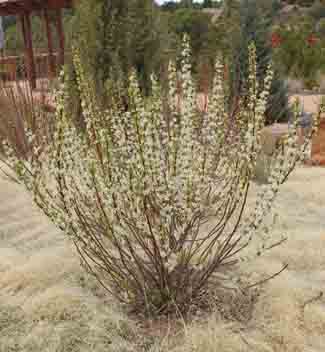 |
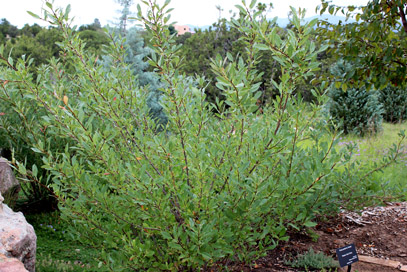 |
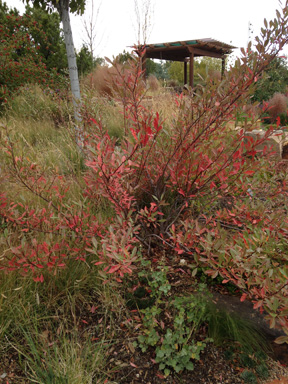 |
Early Spring |
Summer |
Fall |
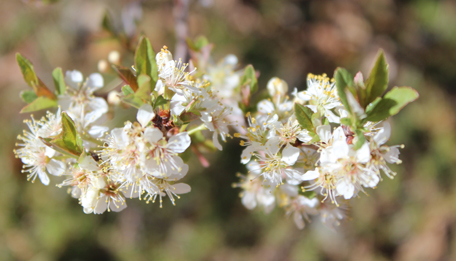 |
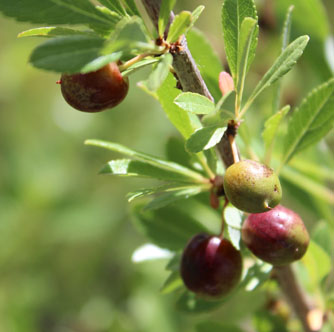 |
The flowers |
The fruit |
Description
"A small, winter-hardy, relatively short-lived shrub native to the Northern Great Plains. Edible fruits which are dark purple to black. Purpleleaf Sandcherry, a hybrid, is a popular landscape shrub."(NDSU)
"Prunus besseyi is a deciduous Shrub growing to 1.2 m (4ft) at a medium rate.
It is hardy to zone (UK) 3. It is in flower in May. The species is hermaphrodite (has both male and female organs) and are pollinated by Insects. Suitable for: light (sandy), medium (loamy) and heavy (clay) soils and prefers well-drained soil. Suitable pH: acid, neutral and basic (alkaline) soils. It can grow in semi-shade (light woodland) or no shade. It prefers moist soil and can tolerate drought." (Plants for a Future)
Known Hazards
"Although no specific mention has been seen for this species, it belongs to a genus where most, if not all members of the genus produce hydrogen cyanide, a poison that gives almonds their characteristic flavour. This toxin is found mainly in the leaves and seed and is readily detected by its bitter taste. It is usually present in too small a quantity to do any harm but any very bitter seed or fruit should not be eaten. In small quantities, hydrogen cyanide has been shown to stimulate respiration and improve digestion, it is also claimed to be of benefit in the treatment of cancer. In excess, however, it can cause respiratory failure and even death." (Plants for a Future)
Internet Resources